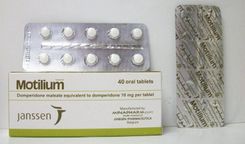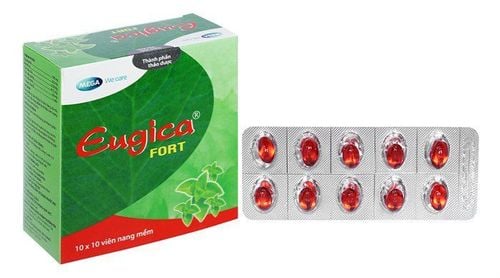This is an automatically translated article.
Xafen 120 and Xafen 180 are both made in the form of tablets, with the main ingredient being Fexofenadine hydrochloride. The drug is used to relieve symptoms of allergic rhinitis, chronic idiopathic urticaria, ...
1. Uses of Xafen
Xafen medicine is usually prepared in the following strength forms: Xafen 60mg, Xafen 120mg and Xafen 180mg with Fexofenadin hydrochloride ingredients of 60mg, 120mg and 180mg respectively. Fexofenadine hydrochloride is an H1 antihistamine that does not cause drowsiness. Fexofenadine is the active metabolite of terfenadine. The drug has the ability to inhibit the antihistamine response starting within 1 hour, reaching its maximum effect at 6 hours, lasting 24 hours.
Indications for use of Xafen:
Relief of seasonal allergic rhinitis symptoms: Runny nose, itchy nose, sneezing, watery eyes; Relief of symptoms of chronic idiopathic urticaria; Relief of symptoms of chronic allergic rhinitis. The use of Xafen is contraindicated in patients with hypersensitivity to the active ingredients and excipients of the drug.
2. How to use and dose Xafen
Usage: Orally.
Dosage:
Chronic allergic rhinitis: Adults and children over 12 years old: Use the recommended dose of 60mg/time x 2 times/day; Children under 12 years of age: The safety and effectiveness of the drug in the treatment of chronic allergic rhinitis have not been studied; Seasonal allergic rhinitis: Adults and children over 12 years of age: Use the recommended dose of 60mg/time x 2 times/day or 120mg/time/day or 180mg/time/day; Children from 6 to 11 years old: The recommended dose is 30mg/time x 2 times/day; Children under 6 years: Efficacy and safety have not been studied in the treatment of seasonal allergic rhinitis; Chronic idiopathic urticaria: Adults and children over 12 years: Use the recommended dose of 180mg/time/day; Children under 12 years of age: Efficacy and safety have not been studied in the treatment of chronic idiopathic urticaria. Special patients: Elderly, renal failure, liver failure : No dose adjustment is required. When using Fexofenadine hydrochloride drug overdose, patients may experience dizziness, dry mouth, fatigue, and lethargy. Standard supportive methods for elimination of unabsorbed drug should be considered immediately after overdose. Systemic supportive treatment is recommended. Dialysis does not remove much Fexofenadine hydrochloride from the body.
3. Xafen 120 and 180 . side effects
When using Xafen, patients may experience some side effects such as:
Nervous: Headache, drowsiness, dizziness; Gastrointestinal: Nausea, diarrhea; Body as a Whole: Fatigue; Immune system: Hypersensitivity reactions including angioedema, dyspnea, chest pain, flushing, systemic anaphylaxis; Psychiatric: Insomnia, nightmares, stress, sleep disturbances; Cardiovascular: Heart palpitations, palpitations; Skin and subcutaneous tissue: Skin itching, urticaria, rash. Patients should immediately inform their doctor about the side effects encountered when using Xafen medicine to receive advice on appropriate management interventions.
4. Be careful when using Xafen
Before and while using Xafen, patients should note:
Be careful when using Xafen in patients with liver failure, kidney failure and the elderly because there are not many studies on the use of the drug in groups. this particular patient; Xafen may be associated with side effects such as tachycardia and palpitations, especially in people with a history of cardiovascular disease; There are no adequate data on the use of Fexofenadine hydrochloride in pregnant women. However, Fexofenadine hydrochloride should not be used in pregnant women unless absolutely necessary. If you have to take medication, pregnant women should follow the doctor's prescription; Fexofenadine hydrochloride is not recommended for nursing women; Although Fexofenadine hydrochloride is less likely to cause drowsiness, caution should still be exercised when using the drug in people who drive or operate machinery that requires mental alertness.
5. Xafen . drug interactions
Some drug interactions of Xafen include:
Fexofenadine hydrochloride does not undergo metabolism in the liver, so it does not interact with other drugs through hepatic metabolism. Concomitant use of Fexofenadine hydrochloride with ketoconazole or erythromycin resulted in a 2- to 3-fold increase in plasma concentrations of Fexofenadine. The changes were not associated with an effect on the QT interval, not associated with an increase in adverse reactions compared with the use of the drug alone; Animal studies have shown an increase in plasma concentrations of fexofenadine following co-administration with ketoconazole or erythromycin. This may be due to increased absorption from the gastrointestinal tract or decreased biliary/gastrointestinal excretion; No interaction was observed between Fexofenadine and omeprazole. However, the administration of an aluminum and magnesium hydroxide-containing antacid gel 15 minutes before Fexofenadine hydrochloride may decrease bioavailability (it is hypothesized that they form binding in the gastrointestinal tract). Therefore, Fexofenadine hydrochloride should be administered every 2 hours for antacids containing aluminum and magnesium hydroxide. When prescribed by a doctor to use Xafen 120 and 180, patients should follow all instructions. This will ensure improved treatment efficiency, reduce patient discomfort and avoid unpredictable side effects.
Please dial HOTLINE for more information or register for an appointment HERE. Download MyVinmec app to make appointments faster and to manage your bookings easily.













